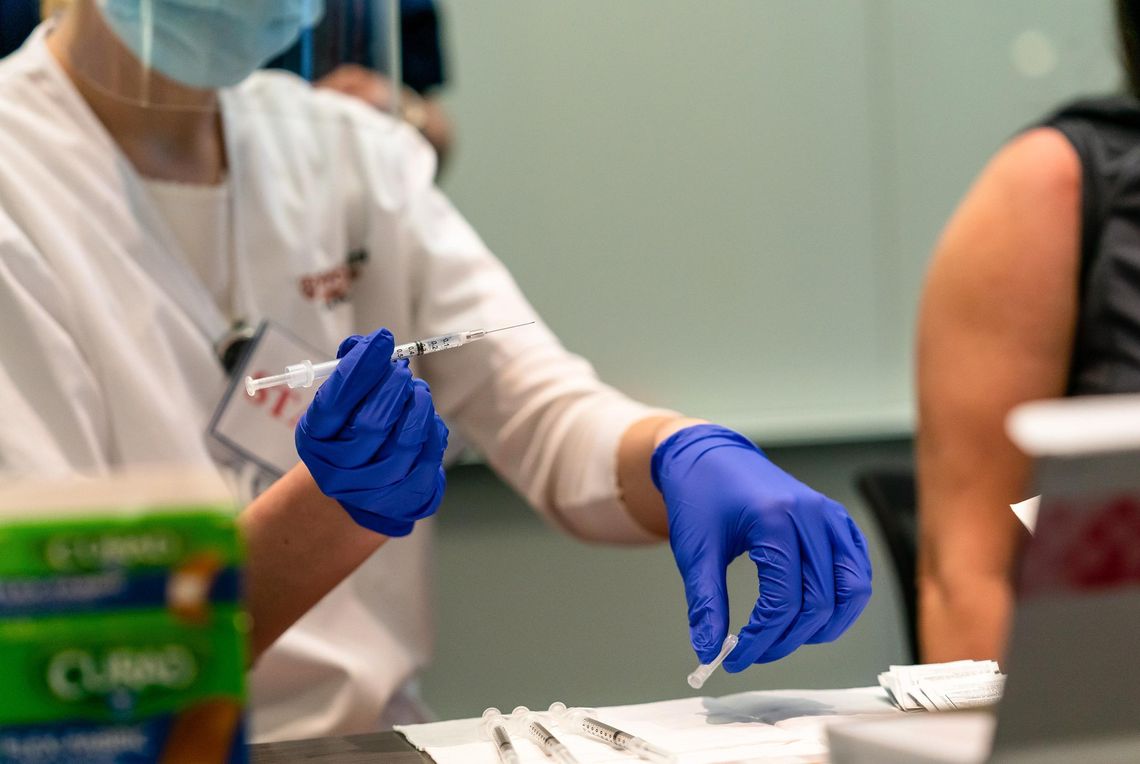Some 620,000 doses of COVID-19 vaccines are expected to land at 1,100 providers in 185 Texas counties starting Monday, including smaller and rural hospitals left out of the first shipment of doses this week, state health officials said Friday.
The Texas allocation will include 159,900 doses of the Pfizer vaccine, most of them earmarked for long-term care facility residents, and 460,500 doses of the vaccine manufactured by Moderna, which won federal emergency use approval Friday and is expected to start shipping this weekend, officials said.
“Adding the Moderna vaccine will dramatically increase the amount of vaccine that can go to rural areas and smaller providers because it ships in smaller quantities and can be stored longer at regular refrigerator temperatures," said Dr. John Hellerstedt, commissioner of the Texas Department of State Health Services. "Both the Moderna and Pfizer vaccines are safe and effective — both can confer protection against COVID-19, regardless of which vaccine you receive.”
By the end of the month, the state expects to receive 1.4 million vaccine doses, which will be distributed to a variety of providers including hospitals, health centers, clinics and other medical practices, pharmacies, freestanding emergency rooms, urgent care centers, long-term care facilities, local health departments, state hospitals, state supported living centers, and Texas Department of Criminal Justice facilities.
Nearly a quarter-million doses of Pfizer's COVID-19 vaccine arrived at hospitals and health care facilities around Texas this week. Front-line health care workers, who have battled the disease that has claimed more than 300,000 lives nationally and nearly 25,000 in Texas, are first in line for the injections, which began in Texas on Monday.
Some 110 sites from the Rio Grande Valley to the Panhandle received doses this week, Gov. Greg Abbott said, including hard-hit border communities and the state's largest cities with some of Texas' highest death tolls. Rural Texas was largely left out of the mix due to logistics, but next week's shipment, with nearly three times as many doses going to 10 times as many providers, includes smaller cities and rural towns such as Palestine, Muleshoe, Killeen, Beeville, Rockport, Odessa and others.
It's part of the second phase of the largest national immunization program in American history. Health officials believe that those who have been vaccinated could still spread the virus and are recommending they continue to practice social distancing and masking until more is known about the vaccines’ effectiveness in stopping the spread. Officials said that the Christmas holiday could push some deliveries into the following week.
Questions remain about who will be first in line for the vaccine once health care workers and long-term care residents have had their chance to be inoculated. Teachers, prisoners and prison staff, essential workers, communities of color, and others who cannot quarantine because of their jobs or economic situations are among many groups whose advocates say are especially vulnerable to the virus and need to be vaccinated in order to get the economy moving and to save more lives.
In remarks from the UPS distribution center in Austin on Thursday, Abbott said he hopes teachers, whom he called “front-line workers” and “pivotal to our society,” will be near the front of the line as the vaccine gets more widely distributed in the coming weeks and months.
"Part of restoring normalcy in our state is to make sure we get our kids back in schools in a learning environment that is best for them, and part of achieving that goal is to make sure that we will have teachers in a safe and secure situation, vaccinated, able to be in a classroom teaching without fear of getting COVID-19," Abbott said. "So I urge and hope that teachers will be near the front of the line in receiving this vaccine."
As COVID-19 cases have risen late this year, more than 2 million of 5.5 million Texas public school students have chosen to stay home and attend school virtually. Most students in majority Hispanic, Black and low-income districts are learning remotely, according to a Texas Tribune analysis of state data.
Decisions on how vaccines are allocated are made by a state panel of advisers — composed of lawmakers, local and state health officials, and medical experts and researchers — and finalized by Hellerstedt.
As of Thursday, at least 9,528 people with the virus were hospitalized in Texas.
Texas is participating in the Pharmacy Partnership for Long-Term Care Program, a federal program to vaccinate residents and staff of long-term care facilities. Vaccine doses will be distributed free to those facilities, which are set to receive them starting Monday, Abbott’s office said last week.
More than 1,200 skilled nursing facilities and more than 2,000 other long-term care facilities — with a total of more than 225,000 beds — had registered for the program as of last week, Abbott’s office said. The program will begin Dec. 28.
Staff writer Aliyya Swaby contributed to this article.
This article originally appeared in The Texas Tribune at https://www.texastribune.org/2020/12/18/texas-coronavirus-vaccine/.
The Texas Tribune is a member-supported, nonpartisan newsroom informing and engaging Texans on state politics and policy. Learn more at texastribune.org.










